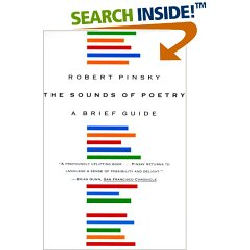

Say it aloud and feel how the rhythm moves the line along, how the l sounds in the first line succumb to the sh sounds in the second – this is mastery of sound. So I feel justified in stating plainly that there are few others writing today more qualified to write on how to use the magic of sound in your poetry. The book is not a comprehensive or exhaustive list of exercises. It isn’t replete with diagrammed lines showing how the stresses of the lines rise and fall in dactyls and anapests. Instead, Pinsky moves to the heart of things, covering rhythm, stresses, accents, the differences between long and short sounds and how pitch, length and volume all contribute to accenting a syllable or leaving it unstressed.
While this may all sound like a book for advanced poets, it is not. If anything, beginners with little notion of anapests and iambs will benefit even more from learning by sound rather than by rote. This is easily one of the most valuable books I have ever had the joy of reading, explaining in clear terms how sound informs and elevates poetry.


You must register to comment. Log in or Register.